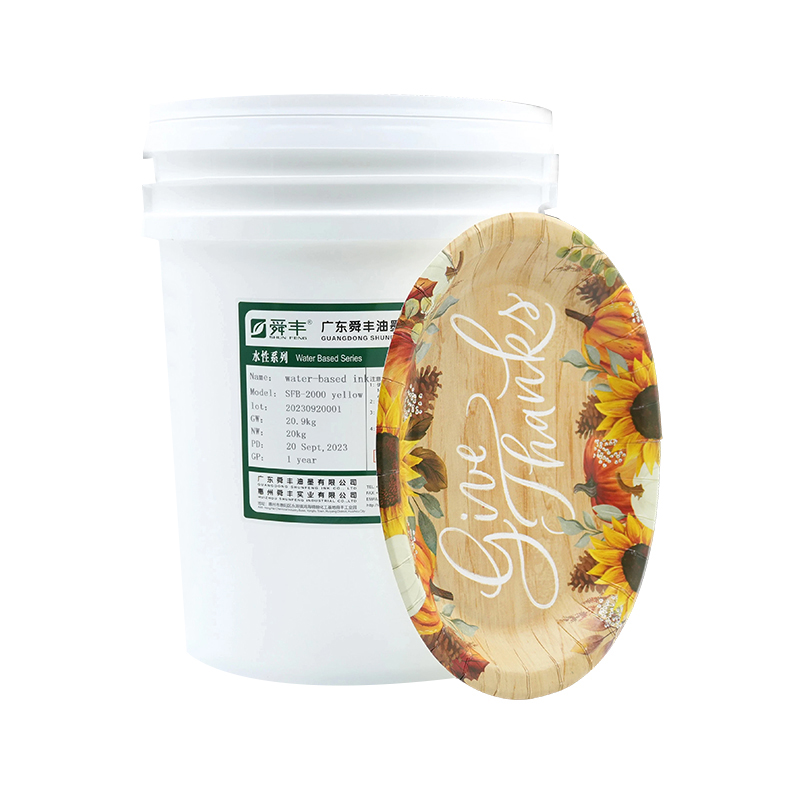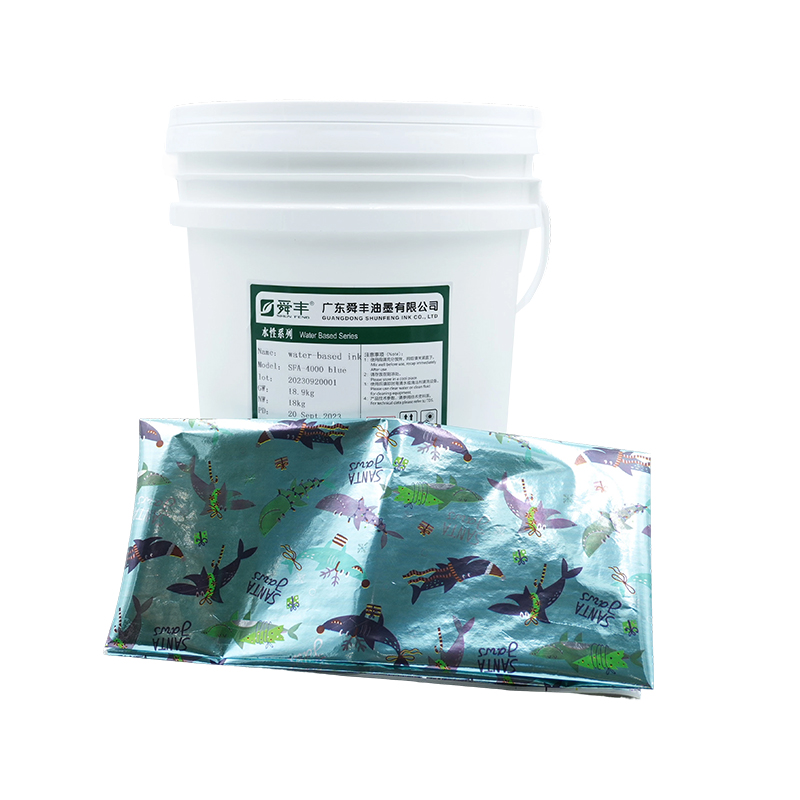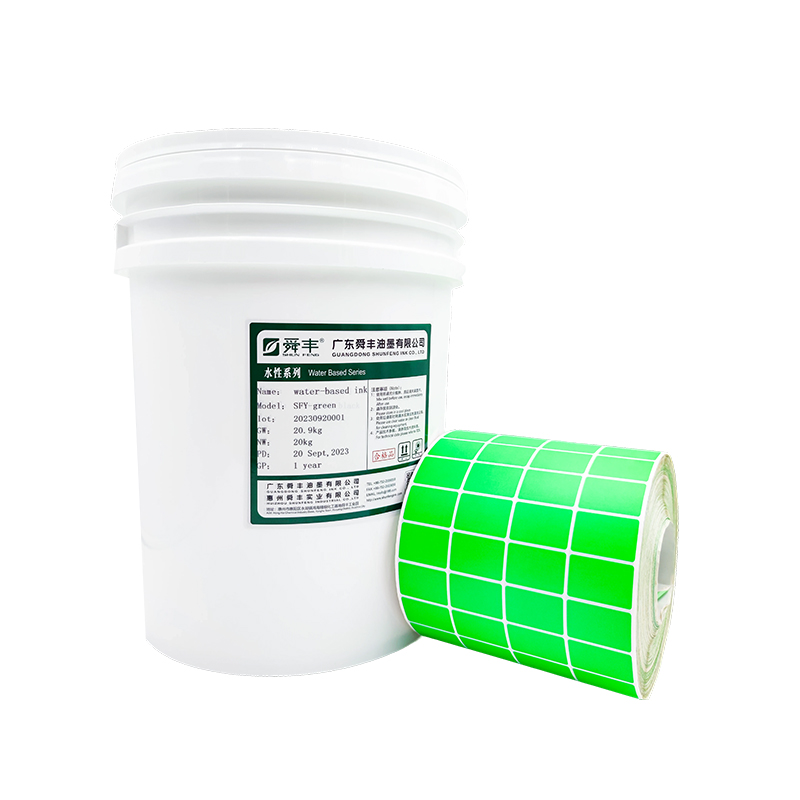How does flexo water-based pre-printing ink achieve accurate color reproduction?
Release Time : 2025-03-26
Flexo water-based pre-printing ink relies on the synergy of multiple key factors in achieving accurate color reproduction.
1. Ink composition and characteristics
Flexo water-based pre-printing ink is mainly composed of pigments, binders, solvents and additives. The selection and ratio of these ingredients are crucial to the color reproduction ability of the ink.
Pigment: Pigments are responsible for providing color, and their particle size and dispersibility directly affect the color vividness and saturation of the ink. High-quality pigment particles are small and evenly dispersed, which can more accurately restore the target color.
Binding material: The binder plays the role of transferring the pigment to the substrate, and its performance directly affects the adhesion and drying speed of the ink. High-quality binders can ensure that the ink is evenly distributed on the substrate, thereby improving the color reproduction.
Solvent: Water-based ink uses water as a solvent, which is environmentally friendly and low-pollution. The volatility and drying speed of the solvent also have a certain impact on the color reproduction of the ink. Reasonable solvent ratio can ensure that the ink remains stable during the printing process and avoid color deviation.
Additives: Additives are used to adjust the viscosity, drying speed and other properties of the ink. By adding the right amount of additives, the printing suitability of the ink can be optimized and the color reproduction accuracy can be further improved.
2. Printing process and equipment
Printing suitability instrument (color display instrument): The color display instrument is an important tool for testing the printing suitability of paper and ink. By using a color display instrument, color samples can be printed with a small amount of ink, which is used to establish an ink database or to compare colors during the color matching process. The stability and accuracy of the color display instrument are crucial for color reproduction.
Computer color matching system: The computer color matching system calculates the ink formula ratio for a given target color based on factors such as color difference and spectral fitting degree through a pre-established base color ink database. This system can quickly and accurately calculate the color matching scheme, reduce the burden on color matching personnel, and improve color accuracy and economic benefits.
Selection of printing plate and anilox roller: The hardness and thickness of the printing plate have an important influence on the transfer of ink. Different substrates require different printing plate thicknesses to ensure good printing results. At the same time, the anilox roller is responsible for transferring the ink to the printing plate, and its line count and ink load directly affect the transfer amount and uniformity of the ink. Therefore, when selecting the printing plate and anilox roller, it is necessary to reasonably match them according to the specific printing requirements and the characteristics of the substrate.
3. Color management and calibration
Establishing an ink database: The establishment of an ink database is the first step in the color matching system. By using a colorimeter to print color samples on different substrates and establishing a corresponding ink database, accurate data support can be provided for subsequent color matching work.
Color measurement and calibration: Use measuring tools such as spectrophotometers to measure standard color samples and printed color samples to ensure color consistency and accuracy. At the same time, regularly calibrate and maintain the printing equipment to ensure that it is in the best working condition.
Color management software: Color management software can help users achieve accurate management and control of colors. Through this software, users can monitor and adjust the colors in the printing process in real time to ensure the accuracy and stability of color reproduction.
4. Substrate characteristics and adaptability
The characteristics of the substrate also have a certain impact on the color reproduction of the ink. Substrates of different materials have different properties such as ink adsorption and drying speed. Therefore, when selecting ink and printing process, it is necessary to fully consider the characteristics of the substrate and conduct corresponding adaptability tests and adjustments.
In summary, the precise color reproduction of flexo water-based pre-printing ink requires the optimization of ink composition and characteristics, precise control of printing process and equipment, strict implementation of color management and calibration, and full consideration of substrate characteristics and adaptability. These factors work together to ensure that flexo water-based pre-printing ink can achieve accurate color reproduction during the printing process.
1. Ink composition and characteristics
Flexo water-based pre-printing ink is mainly composed of pigments, binders, solvents and additives. The selection and ratio of these ingredients are crucial to the color reproduction ability of the ink.
Pigment: Pigments are responsible for providing color, and their particle size and dispersibility directly affect the color vividness and saturation of the ink. High-quality pigment particles are small and evenly dispersed, which can more accurately restore the target color.
Binding material: The binder plays the role of transferring the pigment to the substrate, and its performance directly affects the adhesion and drying speed of the ink. High-quality binders can ensure that the ink is evenly distributed on the substrate, thereby improving the color reproduction.
Solvent: Water-based ink uses water as a solvent, which is environmentally friendly and low-pollution. The volatility and drying speed of the solvent also have a certain impact on the color reproduction of the ink. Reasonable solvent ratio can ensure that the ink remains stable during the printing process and avoid color deviation.
Additives: Additives are used to adjust the viscosity, drying speed and other properties of the ink. By adding the right amount of additives, the printing suitability of the ink can be optimized and the color reproduction accuracy can be further improved.
2. Printing process and equipment
Printing suitability instrument (color display instrument): The color display instrument is an important tool for testing the printing suitability of paper and ink. By using a color display instrument, color samples can be printed with a small amount of ink, which is used to establish an ink database or to compare colors during the color matching process. The stability and accuracy of the color display instrument are crucial for color reproduction.
Computer color matching system: The computer color matching system calculates the ink formula ratio for a given target color based on factors such as color difference and spectral fitting degree through a pre-established base color ink database. This system can quickly and accurately calculate the color matching scheme, reduce the burden on color matching personnel, and improve color accuracy and economic benefits.
Selection of printing plate and anilox roller: The hardness and thickness of the printing plate have an important influence on the transfer of ink. Different substrates require different printing plate thicknesses to ensure good printing results. At the same time, the anilox roller is responsible for transferring the ink to the printing plate, and its line count and ink load directly affect the transfer amount and uniformity of the ink. Therefore, when selecting the printing plate and anilox roller, it is necessary to reasonably match them according to the specific printing requirements and the characteristics of the substrate.
3. Color management and calibration
Establishing an ink database: The establishment of an ink database is the first step in the color matching system. By using a colorimeter to print color samples on different substrates and establishing a corresponding ink database, accurate data support can be provided for subsequent color matching work.
Color measurement and calibration: Use measuring tools such as spectrophotometers to measure standard color samples and printed color samples to ensure color consistency and accuracy. At the same time, regularly calibrate and maintain the printing equipment to ensure that it is in the best working condition.
Color management software: Color management software can help users achieve accurate management and control of colors. Through this software, users can monitor and adjust the colors in the printing process in real time to ensure the accuracy and stability of color reproduction.
4. Substrate characteristics and adaptability
The characteristics of the substrate also have a certain impact on the color reproduction of the ink. Substrates of different materials have different properties such as ink adsorption and drying speed. Therefore, when selecting ink and printing process, it is necessary to fully consider the characteristics of the substrate and conduct corresponding adaptability tests and adjustments.
In summary, the precise color reproduction of flexo water-based pre-printing ink requires the optimization of ink composition and characteristics, precise control of printing process and equipment, strict implementation of color management and calibration, and full consideration of substrate characteristics and adaptability. These factors work together to ensure that flexo water-based pre-printing ink can achieve accurate color reproduction during the printing process.







